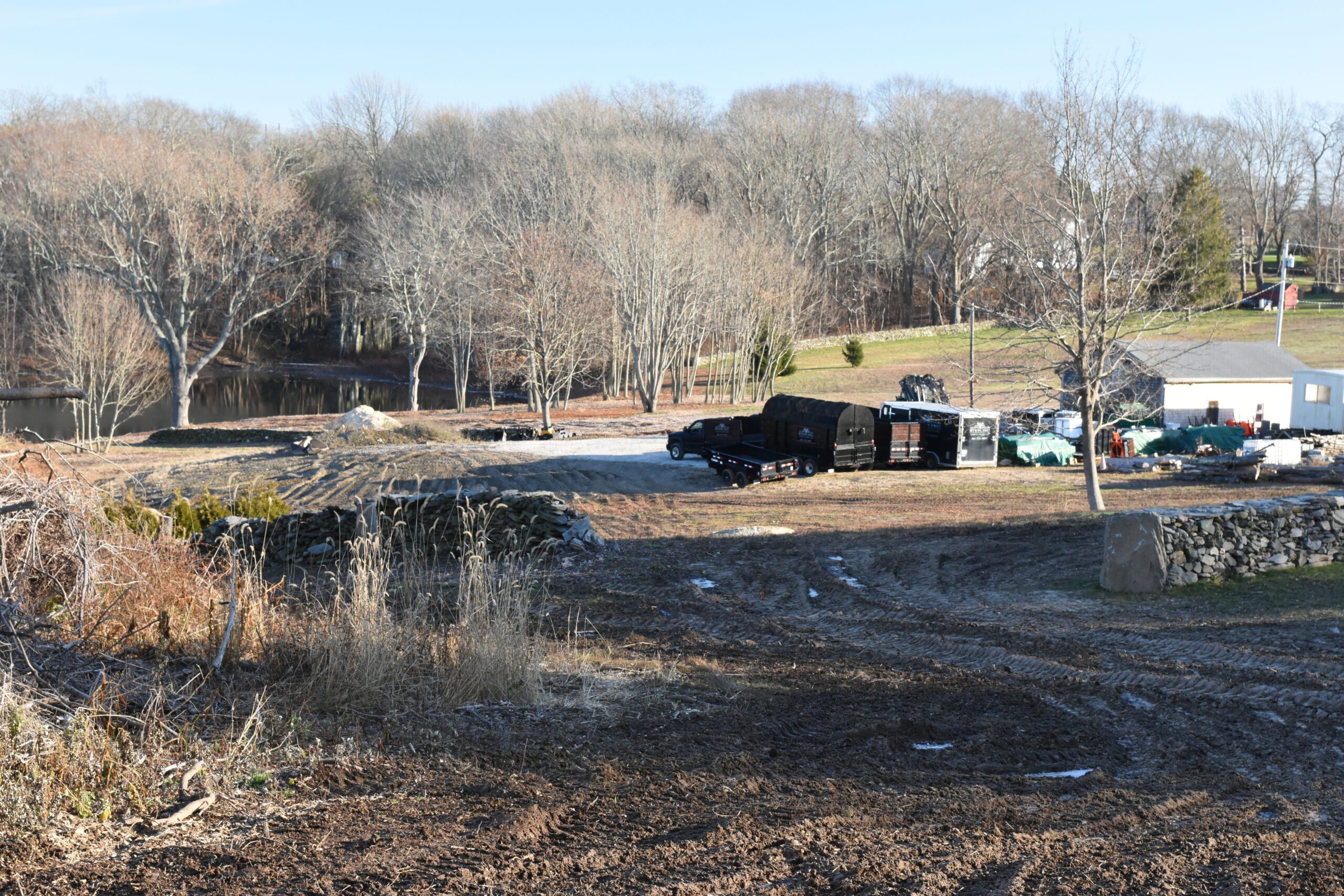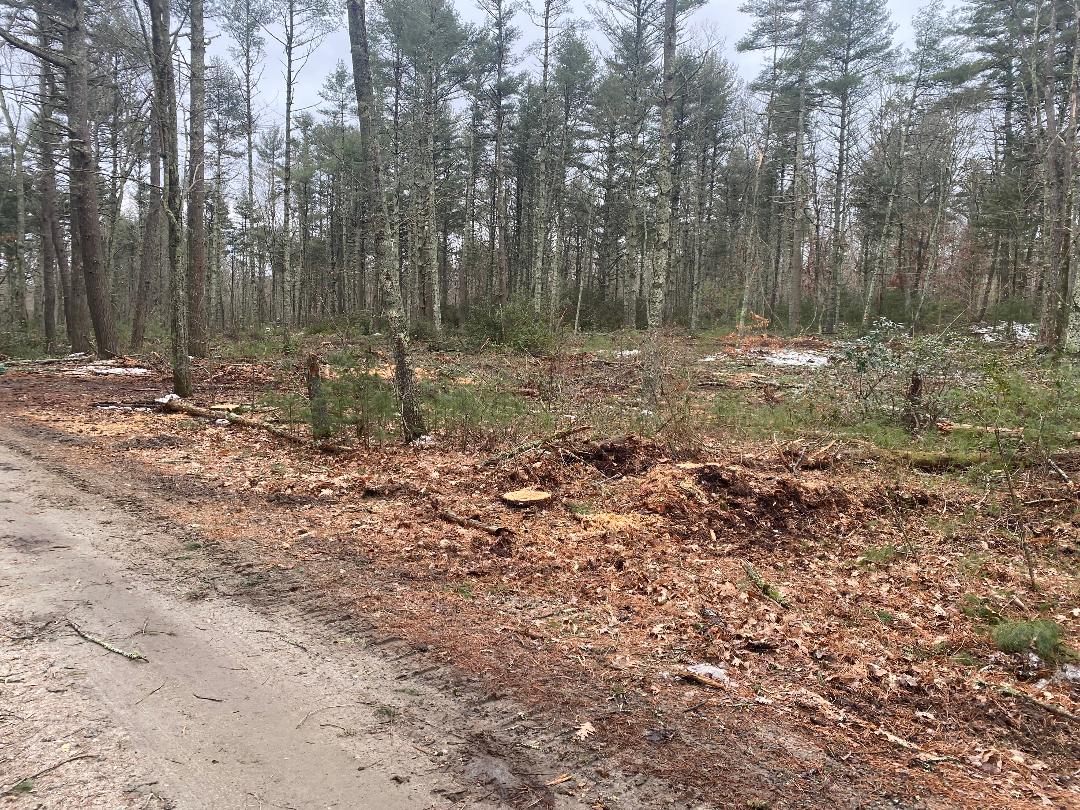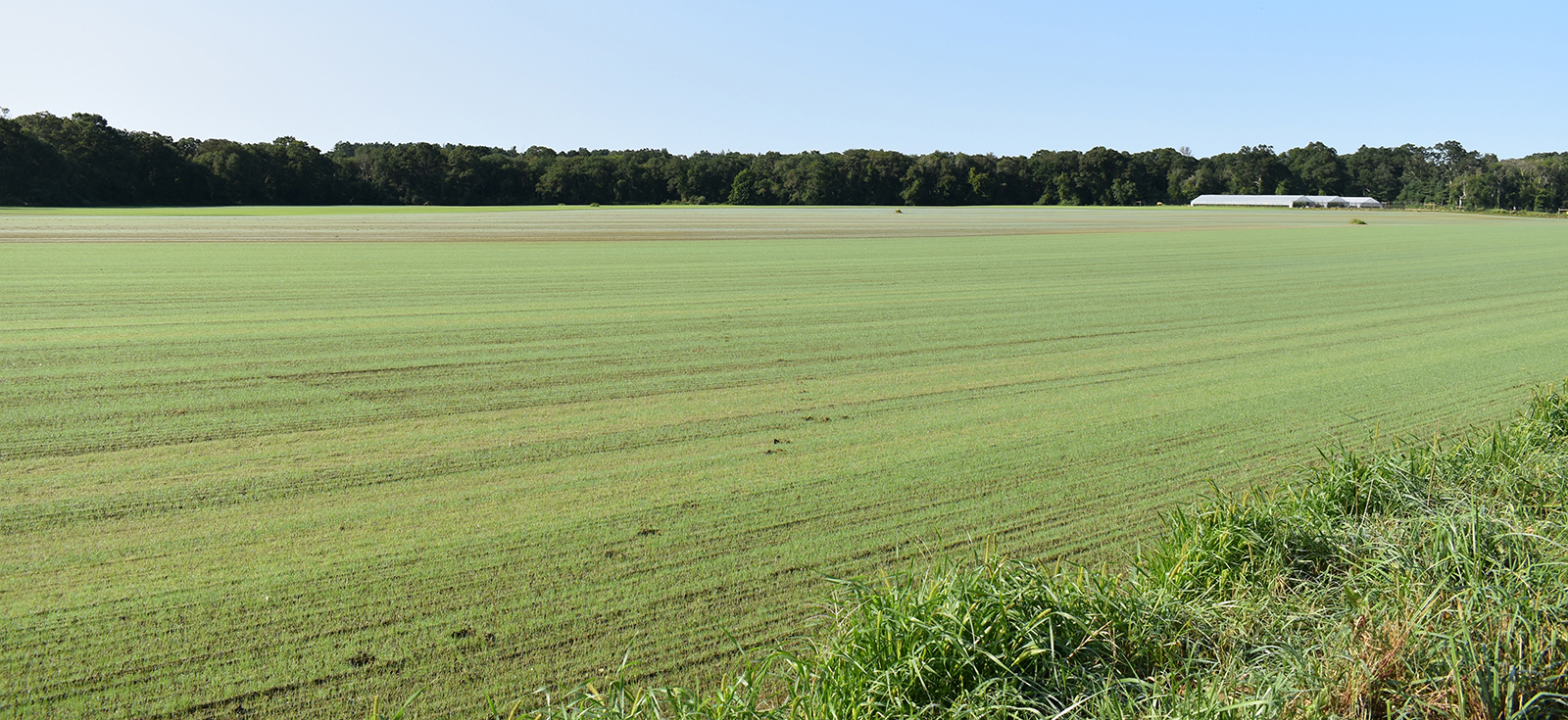Walk in Tiverton Woods Leads to Mother of All Trees
Giant American beech among the many trees in a ‘special’ forest on a farm destined to be transformed into an energy facility
October 22, 2018
TIVERTON, R.I. — The “oohs and aahs” and “oh my gods” were followed immediately by one or more superlatives from among “amazing,” “cool,” “awesome,” “incredible” and “wow.”
“If you could leave this for 100 years people would come from around the world to see it because everything else is going be gone. Just think of it that way,” Matt Largess, a respected Rhode Island arborist who has studied East Coast forests from Maine to the Florida Keys, said near the end of an hourlong walk in the woods on a 72-acre farm not far from the coast. “If Rhode Island could start to think that way, if they saved their places where people come as ecotourists to see the forest. I know its sounds farfetched but in 100 years it’s going to be that crucial, not only to see our leaf colors but just come to be in a forest near our ocean. Rhode Island is one of the great environments. We have these beautiful forests right up to the ocean, but they’re diminishing rapidly.”
During an Oct. 18 tour of Wingover Farm’s “unique” forestland, the leaves of Rhode Island’s state tree, the red maple, were turning color and Largess and two colleagues, Daryl Ward and Kara Discenza, were constantly pointing out trees of all shapes, sizes, and ages.
During the 60-minute tour, they counted nearly two dozen different types of trees, including American beech, American holly, black and white oaks, yellow and white pines, black tupelo, yellow and paper birches, sassafras, black cherry, and bigtooth aspen.
And not just individual trees, but stands of black birch, groups of teenage and adult red maple growing together, and baby holly trees sprouting from the forest floor. Largess said having birch, holly, and beech together in one place was special. He used the word “special” a lot. He said the forest has an “impressive understory.” He noted that some of the tallest hollies documented in North America are in Tiverton and Little Compton. He said native forests of American beech are shrinking rapidly, especially in Connecticut and Rhode Island.
With the population of the region’s American beech decreasing, Largess was thrilled to discover a large beech tree he repeatedly called “the mother tree.” He said the tree must be 300-400 years old and was surrounded by younger beeches, 150 or so years old, waiting to be the next mother. He pointed out beechdrops, a wildflower that lacks chlorophyll and produces brown stems on which small white and purple flowers appear July through October, growing under the forest’s majestic beech tree.
The property’s other vegetation included, among many others, mountain laurel, a broadleaf evergreen shrub; sweet pepperbush, a shrub with fragrant white or pink terminal flower spikes in late summer; and winterberry holly, a shrub with copious amounts of bright-red berries that shine in the fall and winter landscape.
Largess called the layered and biodiverse property, which includes a pond alive with frogs and fish, “a balanced ecosystem.” He said it would be an excellent location for the Rhode Island Natural History Survey to hold a BioBlitz, would make a wonderful outdoor classroom for local students, and could be a great future ecotourism site, as it could be tied into nearby Weetamoo Woods.
Julie Munafo invited the Largess Forestry professionals on the tour to better understand what could be lost should the property be developed into an 11-megawatt solar facility.
Munafo’s family has owned the Crandall Road property since the 1970s, but a pending sale could lead to some 40 acres of solar panels. The buyer’s proposed project would inevitably decimate forestland, ruin farmland, and destroy wildlife habitat.
The family is torn by the pending sale of the property — Munafo, for one, doesn’t want to see the farm reduced to acres of solar panels. But the family was unable to come to an agreement with the local land trust or find a buyer interested in farming and/or preservation, according to Munafo. She said she believes the property is selling for about a million dollars.
Largess, who has become a leading spokesmen for the preservation of trees and old-growth forests, said the farm’s open space is unique, as it features, in this order, open fields, young woodlands, and a mature forest. He was impressed with the property’s mix of vegetation, most notably its diverse collection of tree species. He noted that forestland like this “needs to be protected,” not turned into an energy facility, subdivision, or an office park.
In fact, the staunch conservationist believes trees deserve more respect, which is why his company is “dedicated to the preservation, restoration, and education of the the Earth’s forests while enhancing awareness and knowledge of the natural world.”
“Trees are the No. 1 tool to battle climate change,” Largess said. “But my work as an arborist is less about planting trees and more about cutting them down, because cars are getting dirty or someone wants to see the water.”
Like many following the ongoing debates across Rhode Island on where to site solar projects, Largess doesn’t understand why so many are gung-ho to clear-cut forests. Like others who have weighed in on the controversial topic, he believes Rhode Island can deal with the issues of interconnection, infrastructure, incentives, property rights, and economics without sacrificing priceless open space. (A city in eastern China is building the world’s first photovoltaic highway.)
The will, both public and political, however, needs to be there. The state, its 39 municipalities, its 1.06 million people, and a host of nonprofit organizations have been grappling with the issue for two years. The town of Tiverton, for instance, is pondering a solar moratorium until it can craft an ordinance that better addresses the siting of utility-scale solar energy.
Munafo, who, like Largess, supports renewable energy, at least those projects sited responsibly, has been a vocal proponent of the moratorium. She believes the project proposed for her family’s property doesn’t mesh with the town’s comprehensive plan or even Tiverton’s current solar ordinance. In a letter to the editor recently published in the Sakonnet Times, the Jamestown resident asks: “How is wiping out a historic farmhouse, prime farmland and a special forest for a massive solar plant consistent with the comprehensive plan?”
Site work in the woods of Wingover Farm, likely done to determine the property’s ability to host an industrial-scale solar project, has already claimed a number of trees, including a small stand of American holly.
Once the trees are cut down and the solar panels installed, Largess said the development will clear a path for Russian olive, oriental bittersweet, and other invasive species to take root.
“All these trees will be gone and the whole ecosystem will change,” Largess said. “This place is special. It’s hard to find green spaces like this anymore. This property is a classic example of the problems we are having.”




Destroying this forests ( any forest) for a solar field is , senseless ignorant and counter productive . These beautiful noble forests are crucial to the eco system and health of our state and the planet . Solar fields are best placed where they can provide the greater good , turning blighted areas , abandoned , out dated or under utilized industrial and developed areas into green energy , on roof tops of state municipal and town buildings, etc not harming and destroying invaluable Forests and water , which is our greatest natural resource that needs to be preserved and protected at all costs for our future .
I am all for renewable energy, but not to sacrifice one for the other. Forests are renewable energy, they cool the soil and the atmosphere, protect our ground water reserves, create habitat for vast biodiversity our land needs to stay healthy. What can we do to help people understand and protect our beautiful forests and how important they are to our ecology, wild habitats, air we breathe, regenerating in the important ecosystem. We need to have all people go experience "Forest Bathing", if we can’t bring people into the forest, we need to bring the forest to the people with slide lectures, posters, photographs, widely distributed mailing cards, anything to save these beautiful and important places!
Lori Silvia, Landscape Designer/Lecturer/Gardener/Teacher/ Tree Hugger!
This is not long-term planning. Why not locate the solar field on a brownfield cleanup site? And leave the trees to do what they do best.
I am a solar consultant but I do not want a forest clear cut to add more solar! I agree with Rachel below – find a brownfield to install the solar system!
Julie Munafo was wise to call upon Matt Largess to walk through the Tiverton property.
In his earlier days Matt was the young arborist who sounded the rescue call to save the old growth trees that now comprise Oakland Forest. He understands the value of the woods he "walks through".
It would be helpful to map Rhode Island’s abandoned buildings and unused parking lots so Solar Panel businesses could construct their solar farms without ruining open spaces and forests that have history and value.
Maggie B.
So thoughtfully written! Thank you for bearing witness to the land’s uniqueness.
Does Tiverton have a grant writer? Consult with Weymouth, MA about the Alan Emery mansion and property that is a protected land on King Oak Hill, now owned by the city. This seems to be a similar issue as the one that Weymouth faced.
I agree with not cutting our forests for energy development, especially this beautiful one in Tiverton where we already sacrificed woodland for a gambling joint.
North Providence has appropriately built a solar facility on its closed landfill that couldn’t be used for much else.
I think the environmental movement has been too slow to react to the loss of woodlands. While there is little control over private property, we need not subsidize solar sprawl with tax breaks, that needs to be addressed.